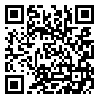Volume 21, Issue 157 (2025)
FSCT 2025, 21(157): 123-144 |
Back to browse issues page
Download citation:
BibTeX | RIS | EndNote | Medlars | ProCite | Reference Manager | RefWorks
Send citation to:



BibTeX | RIS | EndNote | Medlars | ProCite | Reference Manager | RefWorks
Send citation to:
Yarvari B, Kalantari-Hesari A, Pajohi alamoti M, Babaei M. Evaluation of image analysis software competency in skeletal muscle percentage assessment in meat products. FSCT 2025; 21 (157) :123-144
URL: http://fsct.modares.ac.ir/article-7-74725-en.html
URL: http://fsct.modares.ac.ir/article-7-74725-en.html
1- Department of Food Hygiene, Faculty of Veterinary Medicine, Bu-Ali Sina University, Hamedan, Iran
2- Department of Pathobiology, Faculty of Veterinary Medicine, Bu-Ali Sina University, Hamedan, Iran ,a.kalantarihesari@basu.ac.ir
3- Department of Clinical Sciences, Faculty of Veterinary Science, Bu-Ali Sina University, Hamedan, Iran
2- Department of Pathobiology, Faculty of Veterinary Medicine, Bu-Ali Sina University, Hamedan, Iran ,
3- Department of Clinical Sciences, Faculty of Veterinary Science, Bu-Ali Sina University, Hamedan, Iran
Abstract: (736 Views)
In recent years, there has been a growing interest in methods for assessing the percentage of meat (skeletal muscle) in meat products. Given the high margin of error in methods such as chemical analysis, the most reliable and accurate approach for assessing the percentage of skeletal muscle in meat products is histology and subsequent use of image analysis. Due to limited research in this field and the not-so-easy access to some image analysis software, the present study, for the first time, examines the percentage of skeletal muscle in meat products and the time spent on analyzing each sample using two freely accessible graphic software programs (Adobe Photoshop and ImageJ) and two non-free graphic software programs (Clemex and Image Pro-Plus). For this purpose, 100 samples of meat products (30 Kielbasa, 30 sausages, 20 hamburgers, 10 kebab bite, and 10 chicken nuggets) with a known skeletal muscle content were used. After transferring the samples to the laboratory and preparing tissue sections using the Hematoxylin-Eosin staining method, the images of tissue sections were analyzed using the mentioned software programs. The results showed almost equal accuracy of all four software programs assessing skeletal muscles. However, the time required to analyze each ImageJ sample was significantly lower than the other software programs (p< 0.05). Based on the results of this study, it appears that ImageJ software offers greater competence for image analysis of tissue sections and determining the percentage of skeletal muscle in meat products.
Article Type: Original Research |
Subject:
Meat and Products Technology
Received: 2024/04/17 | Accepted: 2024/07/7 | Published: 2025/02/19
Received: 2024/04/17 | Accepted: 2024/07/7 | Published: 2025/02/19
Send email to the article author
| Rights and permissions | |
 |
This work is licensed under a Creative Commons Attribution-NonCommercial 4.0 International License. |








